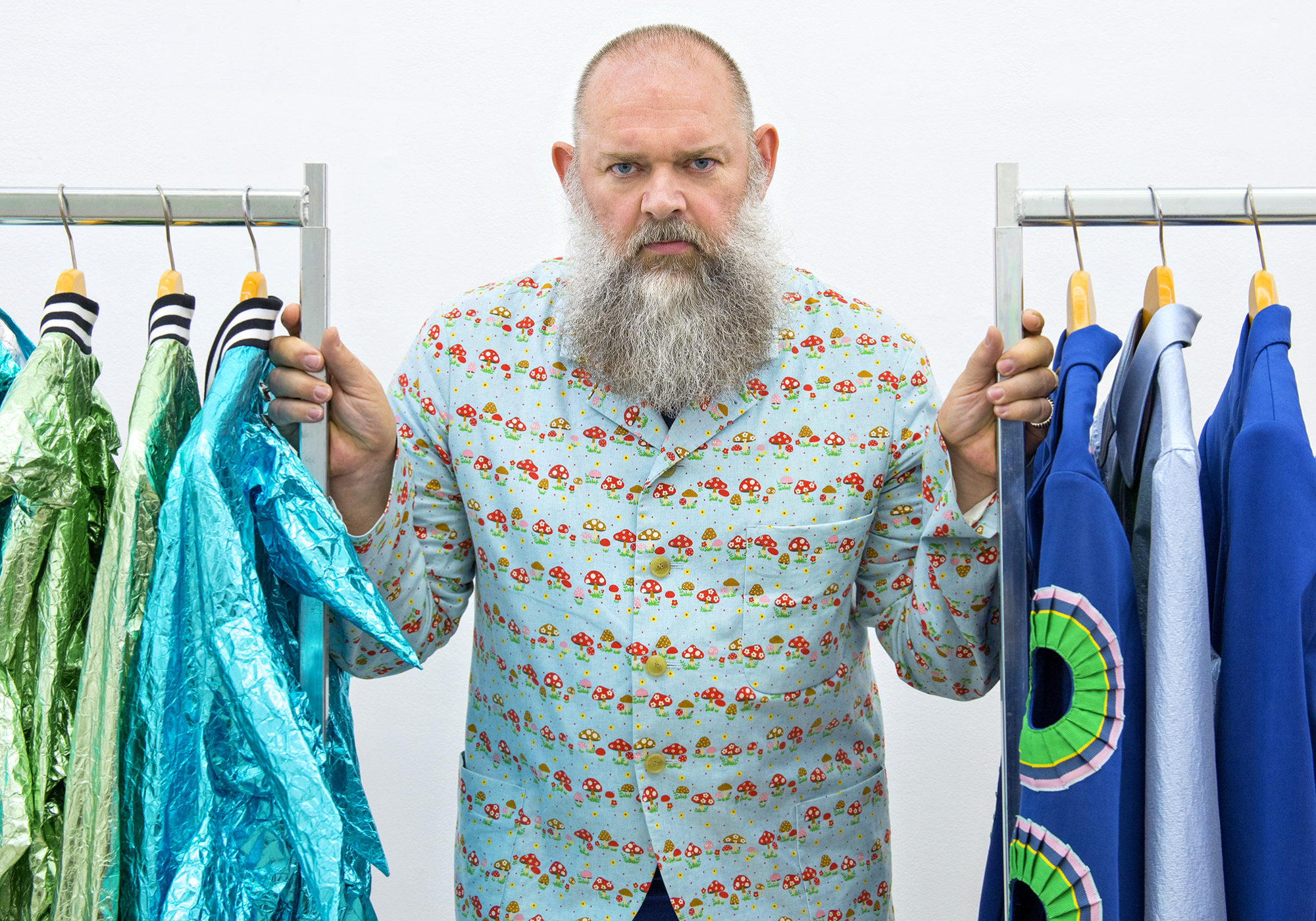Walter Van Beirendonck once compared himself to Greenpeace for the fashion world, a one-man activist organization capable of audacious stunts that jog the industry’s sometimes fatuous social and aesthetic consciousness. He’s typically lumped in with the other so-called “Antwerp Six” designers, all graduates of the city’s Royal Academy of Fine Arts, who burst onto the fashion scene in the late ’80s. But unlike his Flemish design classmates such as Martin Margiela (who sold his company and left fashion) and Dries Van Noten (who built himself into a global brand), Van Beirendonck has kept working in much the same way for the past 30 years, staying small, weird, and subversive, and always remaining close to the city that he helped put on the design map.
Insider: Walter Van Beirendonck’s Guide to Antwerp
The avant-garde fashion designer takes us around the city where he has remained weird and subversive for 30 years.
By Stephen HeymanPortrait by Celine Clanet September 20, 2016
He cultivates a frightful persona with his chest-length ZZ-Top beard, chunky metal rings, and icy blue eyes, looking something like the leader of a motorcycle-bound renegade art collective in a zombie movie. Maybe it’s his look, but he hasn’t always gotten his due for anticipating runway trends. Before gender-bending was cool, he painted his male models’ lips and nails red. Before Rick Owens put a penis on the runway, he printed them on dresses, on underwear, on shoes. Before beards were hip, his models were hirsute. And before big was beautiful, his catwalk challenged the industry’s conventional body shapes.
Van Beirendonck began teaching at the Academy in 1985, four years after his own graduation, and is now head of the school’s fashion department. As much as he is known for being a designer—colorful, avant-garde, politically engaged—his most lasting contribution might be the students he’s nurtured, a who’s who of contemporary fashion that includes everyone from Raf Simons and Bernhard Willhelm to Dior Homme’s Kris van Assche and Demna Gvasalia of Vetements and Balenciaga. Alumni like this have transformed Antwerp into a fashion capital that punches far above its weight, but Van Beirendonck remembers his student days, before “Antwerp Six” was a term, when it was just a sleepy port city, famous only for its diamonds, Rubens, and waffles.
“We really wanted to conquer the world, but we didn’t know how,” he says of the Six. “We discovered French designers like Gaultier and Claude Montana, and Japanese designers like Comme des Garçons and Yohji Yamamoto.” It was the work of these giants, he says, that stimulated him and his contemporaries enormously at a time when there was essentially no fashion in Belgium. “We saw that you could do these very personal statements, but we had to fight hard to get noticed—sometimes against each other. If I was doing something, Dries wanted to do it better, and then Martin wanted to do it better still.” The scene was very competitive, he says. “But in a friendly way.”
Today, everything’s changed. The academy receives applications from all around the world and headhunters from top fashion houses compete to scoop up its graduates. Many students, who in previous years would take off to start their design careers, are choosing to stick around. “It’s the perfect place to work,” Van Beirendonck says. “It’s not expensive, it’s quiet, and it’s close to Paris, Milan, and London.” For him, Antwerp is a place of newness. “The art is great, the food is good, you can live well. There’s a real sense of possibility here.”

At top and above: Van Beirendonck in between clothing racks and posing with shoes in his Paris showroom.
Walter Van Beirendonck’s Guide to Antwerp

Van Beirendonck’s favorite bookstore, Copyright, is located inside the city’s MOMU fashion museum, and sells everything from the latest high-fashion monographs to exquisite vintage art and architecture tomes. Nationalestraat 28, copyrightbookshop.be

For a quiet place to think, retreat into the Botanic Garden Antwerp, which began its life as a medicinal herb garden and now contains more than 2,000 rare plant species. Aromatherapy, for free. Leopoldstraat 24, bgci.org
And for steak frites, head to the venerable Ciro’s restaurant. (Belgian fries are cooked in oxfat, which tastes infinitely better than it sounds.) “This is where I go for traditional Belgian food,” says Van Beirendonck. The interior, which Michelin describes as “nostalgic,” hasn’t changed since the ’70s. Amerikalei 6, ciros.be
After 400 years, the baroque altarpieces by Flemish master Peter Paul Rubens in the Cathedral of Our Lady, the largest cathedral in Benelux region, still have the power to stun. Groenplaats 21, +32 3 213 99 51, dekathedraal.be

